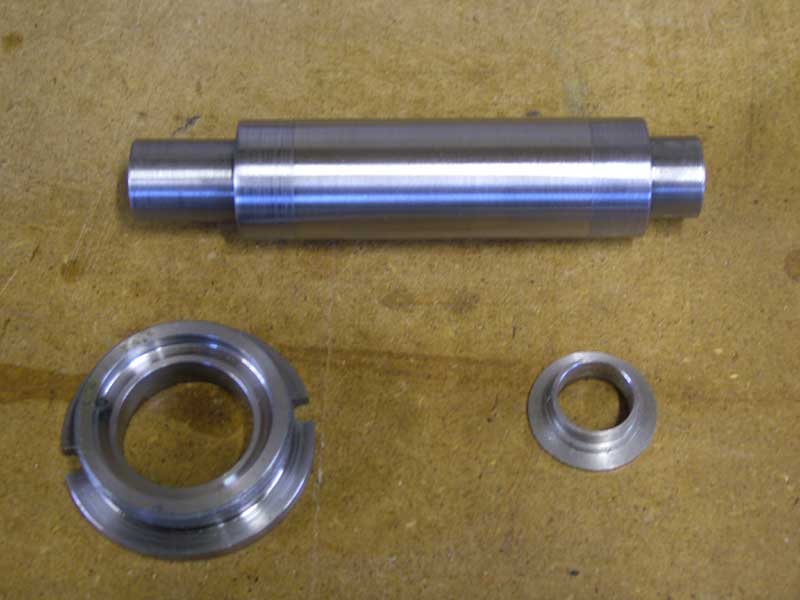
Norton Model 50 350cc
Part 4
I have had a bit of time recently to crack on with making bits for the rear end of the Model 50 - in between jobs on the house and trips away. The only parts I had for the rear drive were a new old stock bare rear hub plus a new Dunlop steel rim and a set of stainless spokes and nipples, so there were quite a few parts needed, although I did manage to source a new old stock brake plate all the way from Australia. I loosely built the hub into the rim with the new spokes, but didn't spend too much time truing it up, as I didn't know where the hub would end up laterally, as I was making up all of the spacers myself. When the hub is fixed accurately in the swinging arm, I can then decide where to fix the rim (within the limits imposed by the spoke lengths) It would have been relatively easy to put an order together from Norvil motorcycles for all of these missing parts but I still enjoy making stuff myself. I did buy a few bits from them to make life a little easier, such as the left hand threaded bearing lock-ring (possible to make but tedious) which also turns the speedo drive and the brake operating cam.

The long spacer was made in the workshop from 3 pieces, the joints between ends in mild steel and the centre section in stainless are just about discernable - the three parts were put together on the hydraulic press. The main reason for 3 pieces was that I didn't have a drill and small boring bar to do it in one, but do have a 9/16" reamer long enough to line ream the whole thing as an assembly.
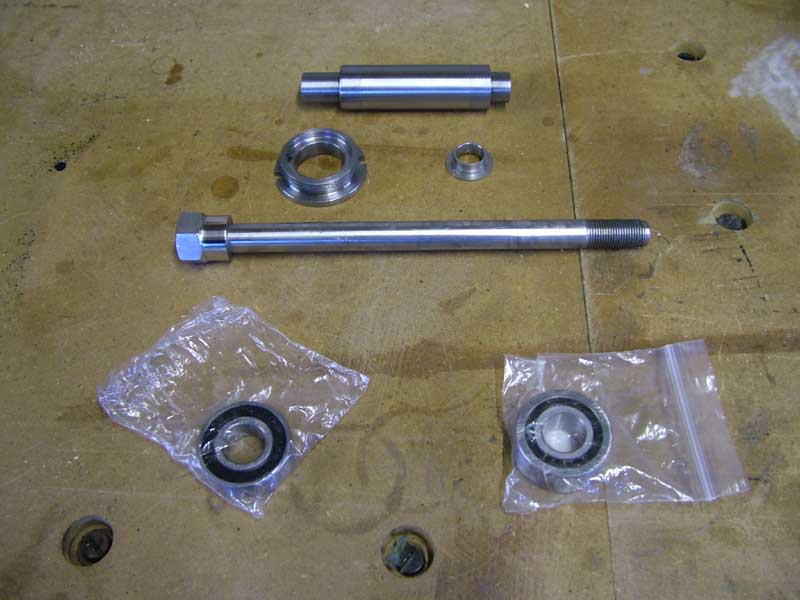
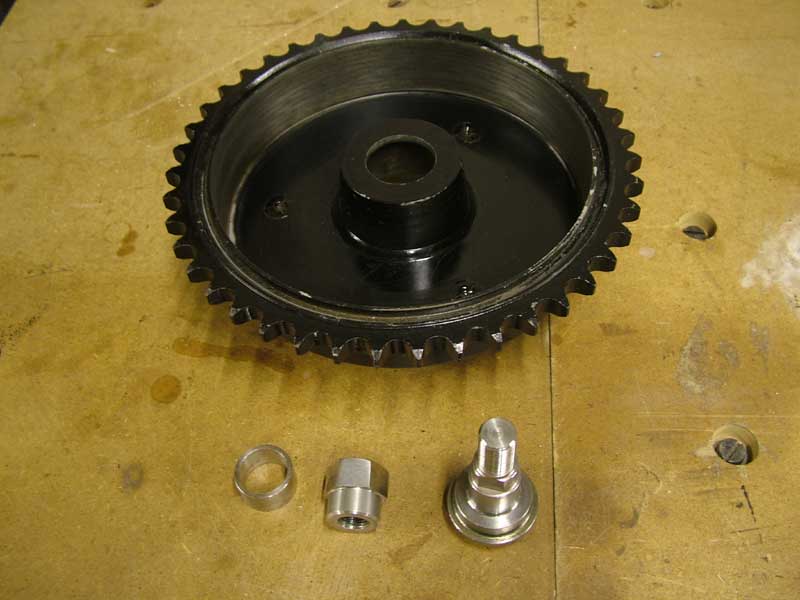
This is the drum/sprocket obtained via eBay and a couple of the fittings in stainless from Norvil, the spacer on the left being made on the lathe - also in stainless.
When the brake plate arrived from Australia, I was amazed that a 50 year old component could re-surface in such great condition - of course it was bare, but the cam spindle bushes and second shoe pivot pin were easy turning jobs on the lathe. The second pivot pin also acts as a torque stop engaging in a slot in the swinging arm.
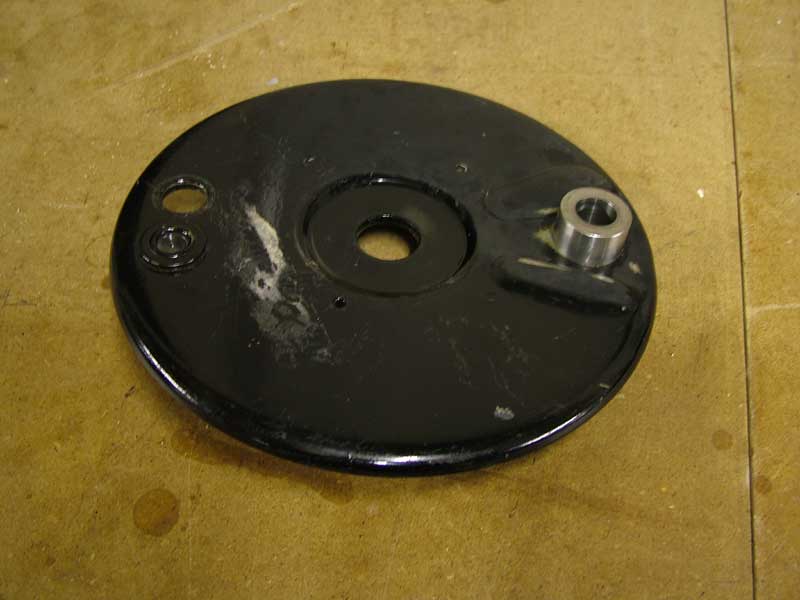
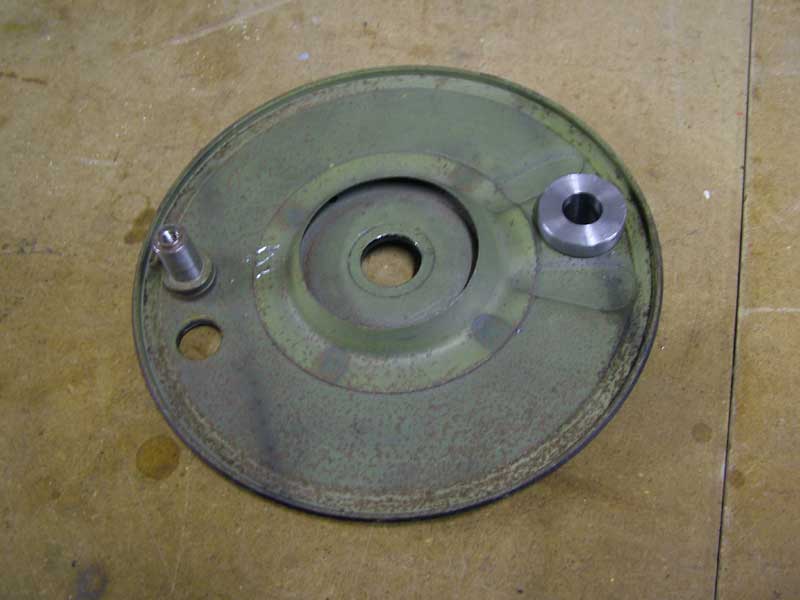
The brake cam bushing was made in a slightly different way from the original - mainly because I didn't have taps and dies big enough to fit it from the outside with a nut on the inside. So I made a bush which fitted from the inside and then pressed and loctited a sleeve over that on the outside.
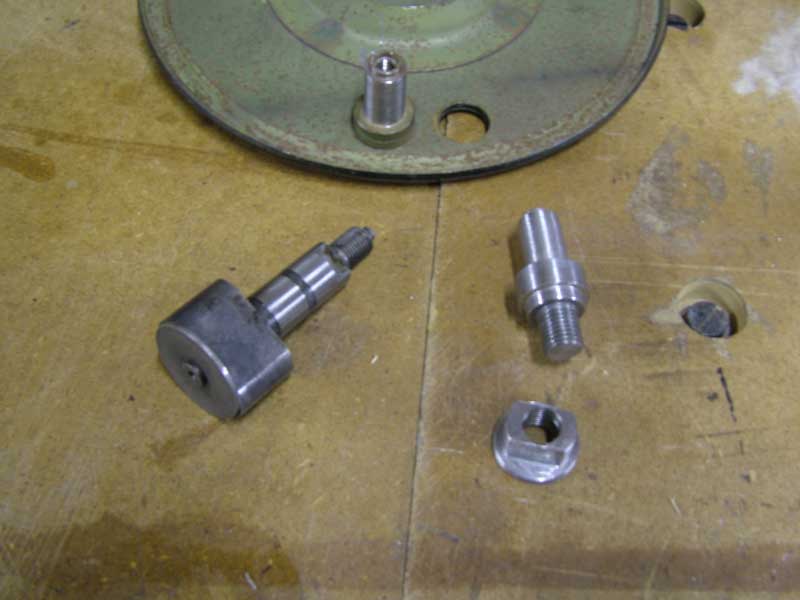
The second shoe pivot pin was also made unconventionally in stainless and is fitted from the inside with a threaded two-flat boss fitted (and again loctited) on to it to act as the torque stop. The brake cam is new old-stock from Norvil.
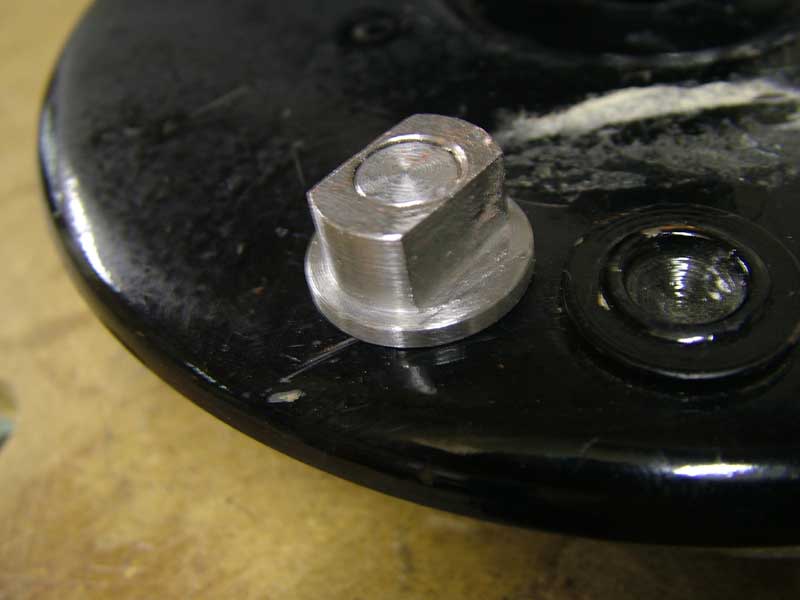
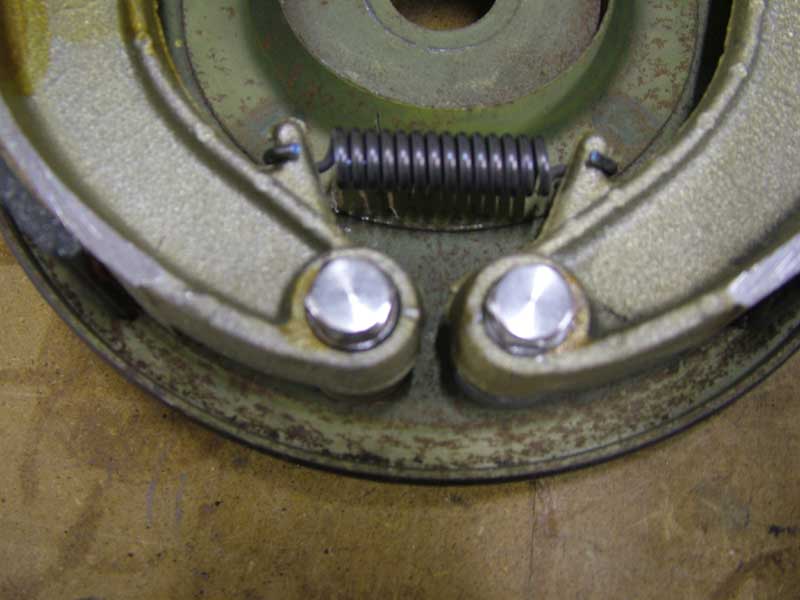
New shoes (with Ferodo linings) and springs have been fitted and I now need to make up a tie plate which fits under the two stainless bolts. This tie plate is needed to prevent the tops of the posts being forced together under heavy brake application and distorting the back-plate. Originally there was also a double ended tab-washer to prevent the bolts from loosening - but we've moved on 50 years since that technology and Loctite studlock is now my preferred method on jobs like this.
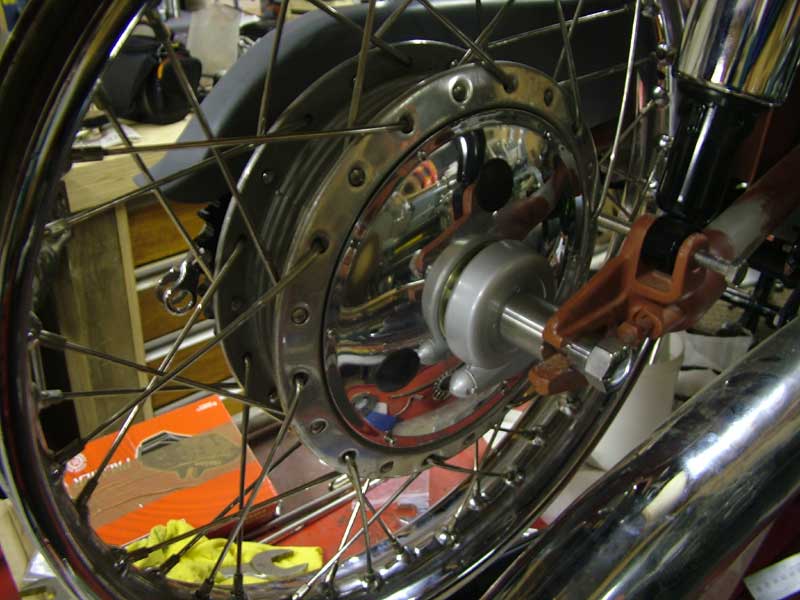
The (almost) finished job with lots of stainless - just needs a nice thick bevelled washer under the spindle bolt head and a corresponding one under the nut on the other side. The ugly looking setscrews in the position where the chain adjusters would normally be, are to rectify the previous owners bodged stripped threads. I have re-drilled and tapped the holes and silver soldered those setscrews in position and they now need cutting off flush and then re-threading to the original size - and a couple of new stainless adjusters making. To get the exact position for those involves making a drilling jig which can be located in the spindle groove and clamped in place, otherwise you end up with the same badly positioned wobbly adjusters.
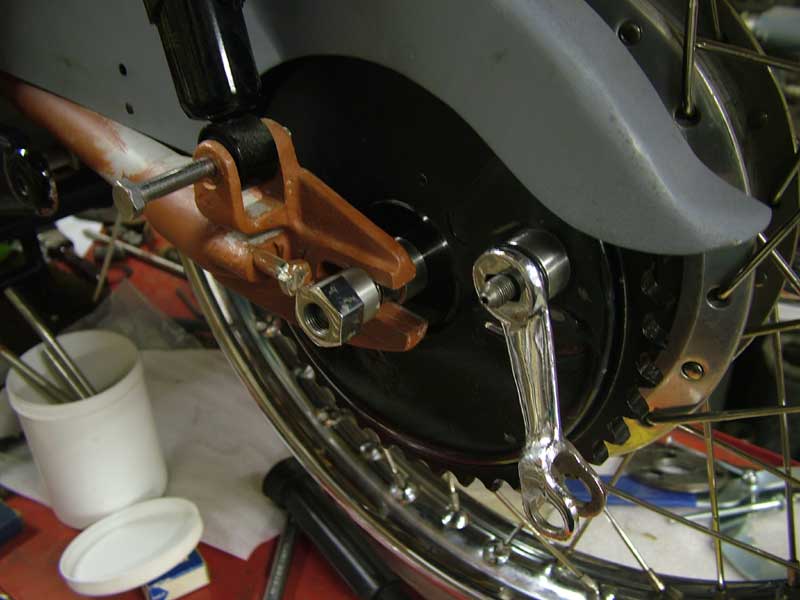
It just needs a few more bits and a nice stainless brake rod and barrel making up. Wouldn't things have been different if all manufacturers had used stainless steel fittings and fasteners in their products - the original cost would have been insignificant and service and maintenance far easier for us folk.